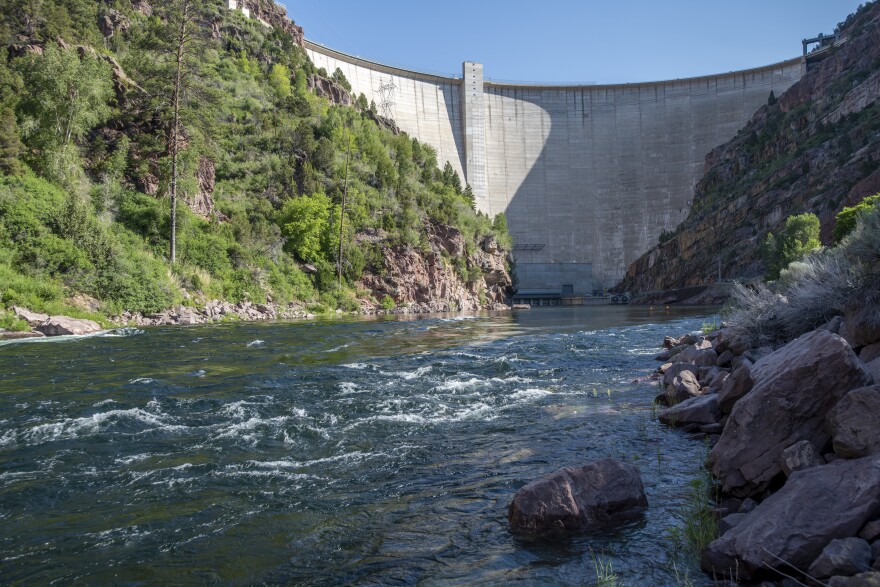The three states that comprise the Colorado River’s Lower Basin – Arizona, California and Nevada – are weighing in on a proposal to pause some water releases from Flaming Gorge Reservoir in an effort to prop up Lake Powell.
Those states essentially agreed with the idea of suspending water releases, but said water managers should wait a few months to see the full effects of spring runoff, and leave the door open for additional releases if warranted. They also stressed the need for input from all of the states which use water from the Colorado River.
On Monday, the four states that make up the Upper Basin – Colorado, Utah, Wyoming and New Mexico – voted to ask the federal government to stop releasing additional water that would flow downstream as part of the 2019 Drought Response Operations Agreement. That plan is designed to increase Lake Powell’s levels with water from upstream reservoirs if the nation’s second-largest reservoir is in jeopardy of losing hydropower production. The current schedule of releases is set to finish by the end of April.
Upper Basin states argue that earlier releases from Flaming Gorge – which holds water in Wyoming and Utah on the Green River – have done their job and sufficiently boosted Lake Powell. And because this has been a particularly wet winter so far, the Upper Basin states want to let spring runoff help refill Flaming Gorge.
The Lower Basin’s letter spells out two main sticking points.
First, representatives from Arizona, California and Nevada agree with the idea of pausing releases due to optimistic forecasts for spring runoff, but say more releases may be needed in the future if that boosted runoff doesn’t materialize.
Strong snow and rain in the Rocky Mountains has given forecasters reason to believe that runoff will be above average this spring and early summer. However, there’s still time for a dry March, April and May to chip away at above-average snow totals, and factors such as warm temperatures and dry soil could keep runoff from reaching streams and reservoirs.
“Just last year, we witnessed a precipitous drop in the runoff projection between February and May in the amount of approximately 1 million acre-feet,” the letter reads.“We must be able to adapt this year if the current runoff projections decline.”
Second, Lower Basin leaders are asking to be consulted before other state and federal water managers make decisions about this kind of water decision.
“I would like to see the Upper Basin states embrace more completely what they agreed to do in the Drought Contingency Plan,” said Tom Buschatzke, Arizona’s top water negotiator. “By that I mean robust consultation with the Lower Basin and a decision making process in which we all have substantial input into that decision at the end of the day.”
The public back-and-forth lays bare tensions among the Colorado River’s top water managers. The Colorado River is shrinking due to climate change, and the states that decide how to share the river are caught in a standoff about how to do that without making painful cuts to any of the major cities, farms and ranches that depend on it.
“The Upper Division states, in relation to what they believe their ability to influence or to determine outcomes, have hit on some – let’s call it a sweet spot – of outcome,” Buschatzke told KUNC.
The Arizona Department of Water Resources confirmed that Buschatzke was borrowing language from a 2018 concept by the Central Arizona Project, which manages a 330-mile-long canal that brings water from the Colorado River to the Phoenix area. That agency released a graphic during tense negotiations over drought contingency plans explaining how it draws enough water from Lake Mead to necessitate releases from Lake Powell, but strategically stops short of drawing too much and triggering water use restrictions.
At the time, the move was cast as manipulative, and Upper Basin state leaders bristled at the CAP’s openness, and suggested the strategy gamed the system.
This story is part of ongoing coverage of the Colorado River, produced by KUNC, and supported by the Walton Family Foundation.
Copyright 2023 KUNC. To see more, visit KUNC.

